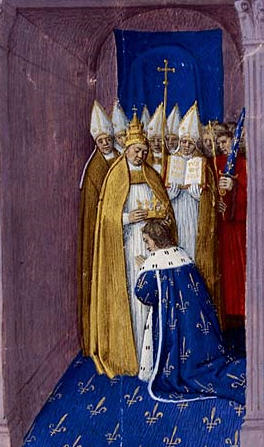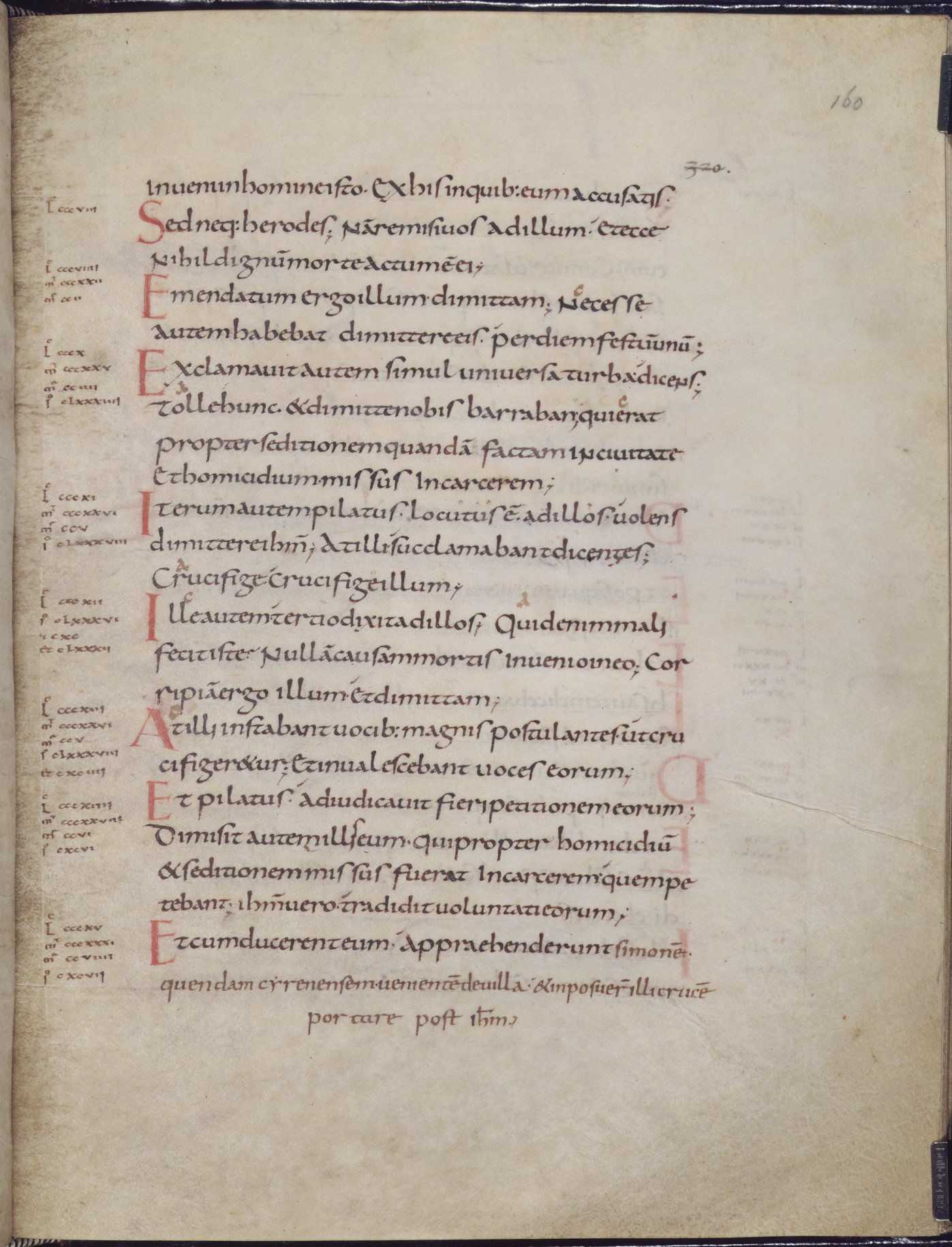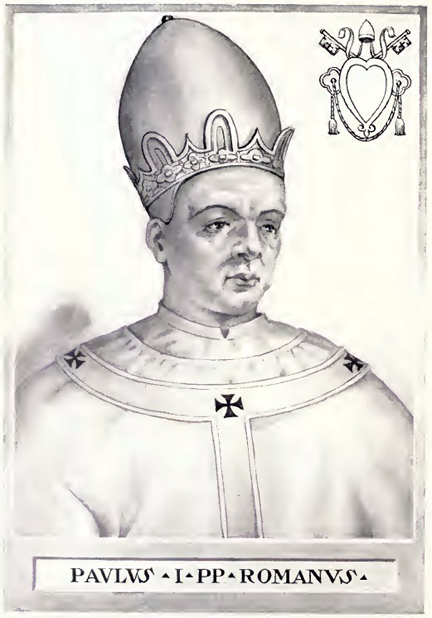|
Gisela, Abbess Of Chelles
Gisela (757, Aachen, Cologne, North Rhine-Westphalia, Germany – 810–11, Chelles, Seine-et-Marne, Ile-de-France, France) was a Frankish princess and abbess. She was the daughter of Pepin the Short and his wife Bertrada of Laon. She was the sister of Charlemagne and Carloman.''Sanctity and Power: The Dual Pursuit of Early Medieval Women'', Suzanne F. Wemple, ''Becoming Visible: Women in European History'', ed. Renate Bridenthal, Claudia Koonz and Susan Stuard, (Houghton Mifflin Company, 1987), 139. Life Gisela is often said to be the only sister to Charlemagne and Carloman, but this was not the case. Pepin the Short in fact had seven legitimate children; Gisela had three older brothers, Rothaid III, born 740, Charlemagne, born 742, and Carloman, born 751. She had two older sisters, Adelheid, born 740, and Bertbelle, born 745. She also had a single younger brother, Charles, who was born 759. Most of her older siblings died before their father, although the years are unknown. Her ... [...More Info...] [...Related Items...] OR: [Wikipedia] [Google] [Baidu] |
Pepin The Short
the Short (french: Pépin le Bref; – 24 September 768), also called the Younger (german: Pippin der Jüngere), was King of the Franks from 751 until his death in 768. He was the first Carolingian to become king. The younger was the son of the Frankish prince Charles Martel and his wife Rotrude, Pepin's upbringing was distinguished by the ecclesiastical education he had received from the monks of St. Denis. Succeeding his father as the Mayor of the Palace in 741, Pepin reigned over Francia jointly with his elder brother Carloman. Pepin ruled in Neustria, Burgundy, and Provence, while his older brother Carloman established himself in Austrasia, Alemannia, and Thuringia. The brothers were active in suppressing revolts led by the Bavarians, Aquitanians, Saxons, and the Alemanni in the early years of their reign. In 743, they ended the Frankish interregnum by choosing Childeric III, who was to be the last Merovingian monarch, as figurehead king of the Franks. Being well ... [...More Info...] [...Related Items...] OR: [Wikipedia] [Google] [Baidu] |
Carolingian Renaissance
The Carolingian Renaissance was the first of three medieval renaissances, a period of cultural activity in the Carolingian Empire. It occurred from the late 8th century to the 9th century, taking inspiration from the State church of the Roman Empire, Christian Roman Empire of the fourth century. During this period, there was an increase of literature, writing, visual arts, architecture, music, jurisprudence, liturgical reforms, and Religious text, scriptural studies. The movement occurred mostly during the reigns of Carolingian rulers Charlemagne and Louis the Pious. It was supported by the scholars of the Carolingian dynasty, Carolingian court, notably Alcuin, Alcuin of York. Charlemagne's ''Admonitio generalis'' (789) and ''De litteris colendis, Epistola de litteris colendis'' served as manifestos. The effects of this cultural revival were mostly limited to a small group of court ''intellectual, literati''. According to John Contreni, "it had a spectacular effect on education a ... [...More Info...] [...Related Items...] OR: [Wikipedia] [Google] [Baidu] |
9th-century French Nuns
The 9th century was a period from 801 ( DCCCI) through 900 ( CM) in accordance with the Julian calendar. The Carolingian Renaissance and the Viking raids occurred within this period. In the Middle East, the House of Wisdom was founded in Abbasid Baghdad, attracting many scholars to the city. The field of algebra was founded by the Muslim polymath al-Khwarizmi. The most famous Islamic Scholar Ahmad ibn Hanbal was tortured and imprisoned by Abbasid official Ahmad ibn Abi Du'ad during the reign of Abbasid caliph al-Mu'tasim and caliph al-Wathiq. In Southeast Asia, the height of the Mataram Kingdom happened in this century, while Burma would see the establishment of the major kingdom of Pagan. Tang China started the century with the effective rule under Emperor Xianzong and ended the century with the Huang Chao rebellions. While the Maya experienced widespread political collapse in the central Maya region, resulting in internecine warfare, the abandonment of cities, and a northward ... [...More Info...] [...Related Items...] OR: [Wikipedia] [Google] [Baidu] |
8th-century Frankish Nuns
The 8th century is the period from 701 (Roman numerals, DCCI) through 800 (Roman numerals, DCCC) in accordance with the Julian Calendar. The coast of North Africa and the Iberian Peninsula quickly came under Islamic Arab domination. The westward expansion of the Umayyad Caliphate, Umayyad Empire was famously halted at the Siege of Constantinople (718), siege of Constantinople by the Byzantine Empire and the Battle of Tours by the Franks. The tide of Arab conquest came to an end in the middle of the 8th century.Roberts, J., ''History of the World'', Penguin, 1994. In Europe, late in the century, the Vikings, seafaring peoples from Scandinavia, begin raiding the coasts of Europe and the Mediterranean, and go on to found several important Monarchy, kingdoms. In Asia, the Pala Empire is founded in Bengal. The Tang dynasty reaches its pinnacle under China, Chinese Emperor Xuanzong of Tang, Emperor Xuanzong. The Nara period begins in Japan. Events * Estimated century in which the p ... [...More Info...] [...Related Items...] OR: [Wikipedia] [Google] [Baidu] |
8th-century Frankish Nobility
The 8th century is the period from 701 ( DCCI) through 800 ( DCCC) in accordance with the Julian Calendar. The coast of North Africa and the Iberian Peninsula quickly came under Islamic Arab domination. The westward expansion of the Umayyad Empire was famously halted at the siege of Constantinople by the Byzantine Empire and the Battle of Tours by the Franks. The tide of Arab conquest came to an end in the middle of the 8th century.Roberts, J., ''History of the World'', Penguin, 1994. In Europe, late in the century, the Vikings, seafaring peoples from Scandinavia, begin raiding the coasts of Europe and the Mediterranean, and go on to found several important kingdoms. In Asia, the Pala Empire is founded in Bengal. The Tang dynasty reaches its pinnacle under Chinese Emperor Xuanzong. The Nara period begins in Japan. Events * Estimated century in which the poem Beowulf is composed. * Classical Maya civilization begins to decline. * The Kombumerri burial grounds are founded. * ... [...More Info...] [...Related Items...] OR: [Wikipedia] [Google] [Baidu] |
810 Deaths
81 may refer to: * 81 (number) * one of the years 81 BC, AD 81, 1981, 2081 * Nickname for the Hells Angels Motorcycle Club The Hells Angels Motorcycle Club (HAMC) is a worldwide outlaw motorcycle club whose members typically ride Harley-Davidson motorcycles. In the United States and Canada, the Hells Angels are incorporated as the Hells Angels Motorcycle Corporatio .... "H" is the eighth letter of the alphabet, and "A" is the first. See also * * List of highways numbered {{Numberdis ... [...More Info...] [...Related Items...] OR: [Wikipedia] [Google] [Baidu] |
757 Births
__NOTOC__ Year 757 ( DCCLVII) was a common year starting on Saturday (link will display the full calendar) of the Julian calendar. The denomination 757 for this year has been used since the early medieval period, when the Anno Domini calendar era became the prevalent method in Europe for naming years. Events By place Europe * Tassilo III, duke of Bavaria, recognizes the supremacy of King Pepin III ("the Short") at an assembly held at Compiègne (Northern France), and becomes a vassal of the Frankish Kingdom. He swears an oath ('' commendatio'') to Pepin, and promises his allegiance. * King Alfonso I ("the Catholic") dies at Cangas (modern Spain), after an 18-year reign. He is succeeded by his son Fruela I as ruler of Asturias. Britain * King Æthelbald of Mercia is murdered by his own household in a palace coup. He is succeeded briefly by Beornred, but he is, in turn, ousted by Æthelbald's distant cousin, Offa. In the meantime, Mercian supremacy over Southern Eng ... [...More Info...] [...Related Items...] OR: [Wikipedia] [Google] [Baidu] |
Gisela, Daughter Of Charlemagne
Gisela, (in or before 781 - 808 or later) was a daughter of Charlemagne from his marriage to Hildegard. She was baptized at the Basilica of Sant'Ambrogio in 781 by Thomas, Archbishop of Milan. She was educated at the castle in Aachen, with Alcuin who gave her the nickname "Delia". According to Alcuin she took a particular interest in astronomy.Daily Life in the World of Charlemagne Pierre Riche, page 205 Alcuin refers to "Delia" in some of his poetry. Like her sisters and |
Hildegard, Wife Of Charlemagne
Hildegard (c. 754 – 30 April 783), was a Frankish queen consort who was the second wife of Charlemagne and mother of Louis the Pious. Little is known about her life, because, like all women related to Charlemagne, she became notable only from a political background, recording her parentage, wedding, death, and her role as a mother. Origins She was the daughter of the Germanic Count Gerold of Kraichgau (founder of the Udalriching family) and his wife Emma, in turn daughter of Duke Nebe (Hnabi) of Alemannia and Hereswintha vom Bodensee (of Lake Constance). Hildegard's father had extensive possessions in the dominion of Charlemagne's younger brother Carloman, so this union was of significant importance for Charlemagne, because he could strengthen its position in the east of the Rhine and also could bind the Alemannian nobility to his side. Life It is unknown if Charlemagne planned his marriage before the sudden death of Carloman or was just a part of the purposeful inco ... [...More Info...] [...Related Items...] OR: [Wikipedia] [Google] [Baidu] |
Alcuin
Alcuin of York (; la, Flaccus Albinus Alcuinus; 735 – 19 May 804) – also called Ealhwine, Alhwin, or Alchoin – was a scholar, clergyman, poet, and teacher from York, Northumbria. He was born around 735 and became the student of Ecgbert of York, Archbishop Ecgbert at York. At the invitation of Charlemagne, he became a leading scholar and teacher at the Carolingian dynasty, Carolingian court, where he remained a figure in the 780s and 790s. Before that, he was also a court chancellor in Aachen. "The most learned man anywhere to be found", according to Einhard's ''Vita Karoli Magni, Life of Charlemagne'' (–833), he is considered among the most important intellectual architects of the Carolingian Renaissance. Among his pupils were many of the dominant intellectuals of the Carolingian era. During this period, he perfected Carolingian minuscule, an easily read manuscript hand using a mixture of upper- and lower-case letters. Latin paleography in the eighth centur ... [...More Info...] [...Related Items...] OR: [Wikipedia] [Google] [Baidu] |
Bertrada Of Laon
Bertrada of Laon (born between 710 and 727 – 12 July 783), also known as Bertrada the Younger or Bertha Broadfoot (cf. Latin: ''Regina pede aucae'' i.e. the queen with the goose-foot), was a Frankish queen. She was the wife of Pepin the Short and the mother of Charlemagne, Carloman and Gisela, plus five other children. Nickname Bertrada's nickname "Bertha Broadfoot" dates back to the 13th century, when it was used in Adenes Le Roi's trouvère ''Li rouman de Berte aus grands piés''. The exact reason that Bertrada was given this nickname is unclear. It is possible that Bertrada was born with a clubfoot, although Adenes does not mention this in his poem. The nickname might have been a reference to an ancient legend about a Germanic goddess named Perchta, to real and mythological queens named Bertha, or to several similarly named Christian queens. Many myths and legends exist in Europe and Asia, in which clubfooted people are described as the link between the world of the living ... [...More Info...] [...Related Items...] OR: [Wikipedia] [Google] [Baidu] |
Latin
Latin (, or , ) is a classical language belonging to the Italic branch of the Indo-European languages. Latin was originally a dialect spoken in the lower Tiber area (then known as Latium) around present-day Rome, but through the power of the Roman Republic it became the dominant language in the Italian region and subsequently throughout the Roman Empire. Even after the fall of Western Rome, Latin remained the common language of international communication, science, scholarship and academia in Europe until well into the 18th century, when other regional vernaculars (including its own descendants, the Romance languages) supplanted it in common academic and political usage, and it eventually became a dead language in the modern linguistic definition. Latin is a highly inflected language, with three distinct genders (masculine, feminine, and neuter), six or seven noun cases (nominative, accusative, genitive, dative, ablative, and vocative), five declensions, four verb conjuga ... [...More Info...] [...Related Items...] OR: [Wikipedia] [Google] [Baidu] |









